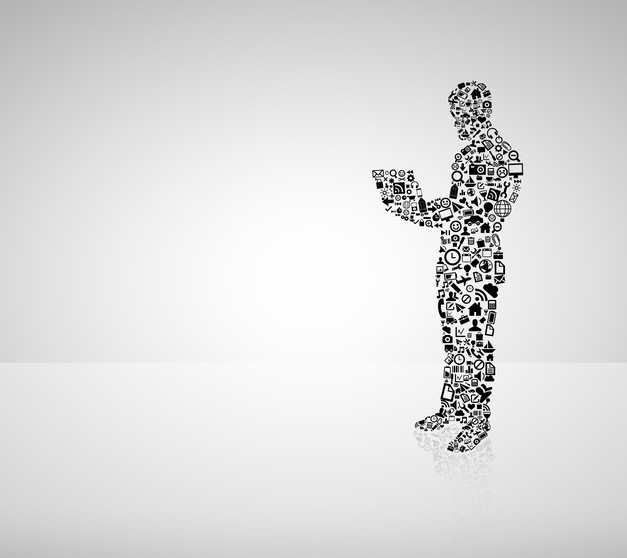Most businesses today are moving to stop producing a heavy paper trail. Government businesses began implementing the paperless movement back in 2003 when the Office of Management and Budget looked to the transition of electronic communications versus the paper generation. It was clear that many Americans were looking to reduce the amount of paper generated through business transactions as well as reducing the carbon footprint for big companies that were using antiquated forms for business transactions.
The Implementation of the Government Paperwork Elimination Act (GPEA) allowed companies the option of transitioning to electronic transmissions instead of forms. GPEA allowed the use of the electronic signature as part of a legal and binding autograph for government forms. The Internet allowed businesses to electronically store information and remove and reduce all their paperwork that once needed to be collected and stored in locations that were either in-house or in offsite facilities acquiring a monthly charge for the services. It has been a long road, and many agencies are slow moving when it comes to paperless forms.
It is an inevitable transition. In the interest of saving money, having less impact on the environment, and providing a more secure workplace for documents, the electronic signature, and the paperless system allowed the reduction by millions of dollars that were otherwise allocated to the production, transportation, and storing of physical paper documents.
When we need to go for our random drug testing in facilities, there was always a paper trail that needed to be generated. Each urinalysis collected had a chain of custody attached to the specimen. The chain of custody form is a unique physical evidentiary document that must accompany your specimen. It is the same for all physical evidence collected. For example: in crimes, physical evidence to be used against the defendant must be handled in a specific order.
That means if a police officer touches, for example, a gun at the scene of the crime, that officer must process, collect, and establish a chain of custody for the physical evidence. If the chain of custody is broken, then the evidence, no matter how important it is for the crime and linking the defendant to a location or the crime itself, cannot be included in the charging of the defendant.
 While your urinalysis is not as important as a gun, it is important enough to be handled as physical evidence and needs procedures that are strictly followed and enforced. When you understand the chain of custody form, you should pay particular attention to what exactly happens to your specimen, especially if your employment depends on a negative outcome for drug testing.
While your urinalysis is not as important as a gun, it is important enough to be handled as physical evidence and needs procedures that are strictly followed and enforced. When you understand the chain of custody form, you should pay particular attention to what exactly happens to your specimen, especially if your employment depends on a negative outcome for drug testing.
Never allow your specimen out of your sight after you submit the urinalysis until the seal for the chain of custody has been permanently affixed to the collection container, and you have provided your initials on the seal. For every specimen collected, there is a form that follows the specimen. Prior to the electronic forms, there was five-part NCR (No Carbon Required) paperwork that was generated for the drug tests.
The cost of printing, shipping, and storing the chain of custody form was expensive. Most offset printers that are government contracted to provide these forms have been doing so for over 40 years.
Today, everything has changed. With the implementation of the electronic Chain of Custody Form (eCCF), you can rest easy that each specimen will be handled more securely, faster, and generate considerably less cost in documents than it did before August 2016. Not every drug testing facility is currently using the eCCF benefits; however, Quest Diagnostics has been approved to handle specimens in federally mandated, safety-sensitive employees. What this means is everything will be streamlined and reduce considerable paper waste attributed to the chain of custody of samples. There will be considerably fewer data entries and issues with legibility. It will significantly reduce collection site flaws.
The expedited delivery of the eCCF between employers and Medical Review Officer (MRO) will ensure that data is available immediately. The eCCF is an integrated system that replaces paper and is stored electronically. There is considerably less paper to maintain, secure, and manage. It will improve overall efficiency throughout the entire process. It will mean less wait at drug testing facilities. The U.S. Department of Transportation (DOT) is already part of the new eCCF for regulated drug testing. While not every drug testing facility is using the eCCF, US Drug Test Centers is part of the national eCCF system.
One of the main concerns employers have regarding the new eCCF is whether or not it is truly secure. The tamper-evidence label that is affixed to the collected sample has preprinted Specimen ID barcodes that are unique to each specimen. Once the collected specimen is sealed and the donor initials the evidence label, the sample is scanned, and the Specimen ID will show up on the eCCF.
The data is stored on secure servers, and the barcode associated with each specimen is never duplicated. From the collection of the sample at the US Drug Test Centers, transportation to the laboratories and testing of the specimen is handled through the scanning process. The method reduces any possibility of lost physical evidence because each specimen can be immediately located through the tracking of the eCCF.
Handling specimens has never been easier. The unique identifier of the Specimen ID will allow the monitoring of the drug test process from collection to testing and is stored in the eCCF server database indefinitely. The method reduces any data entry errors because of improper input by collection specialists. The collection sites use the barcode to track every process, and the signature pad captures the donor's autograph electronically.
The process will immediately generate eCCF images to be used for tracking purposes. The images are digital copies that are more legible and can deliver information through email to the appropriate agencies for results. It is a better system and will streamline the entire process, reduce significant costs in printing, shipping, and processing paperwork. Going paperless is always better.


 Ashlee Arnold is one of the founders of US Drug Test Centers and is currently the Vice President.
Ashlee Arnold is one of the founders of US Drug Test Centers and is currently the Vice President. 


